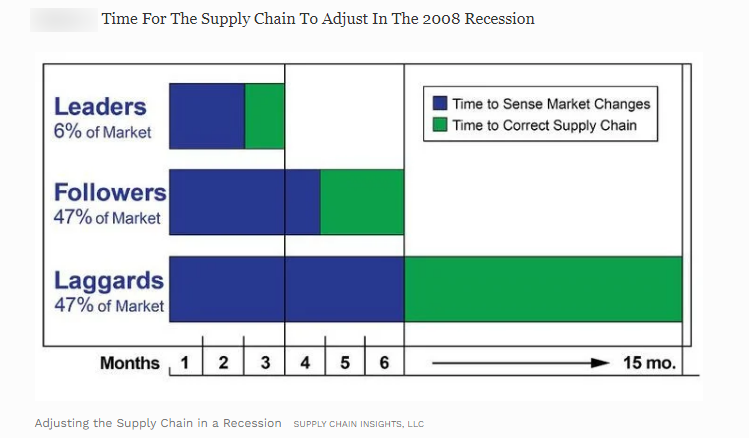
Digital Transformation for Supply Chain: Now is not a time for complacency. Think differently. Drive new outcomes.
- Use new forms of analytics to forecast at each tier using consumption data. Hold your organization accountable for signal accuracy at each node. Redefine demand as a river that flows through your supply chain. Change the paradigm to think about demand as a time-phased forecast based on historic order consumption.
- The second step to take is to decouple the supply chain from the budget and rethink managerial incentives. The reason? The budget is out of date the minute it is published and it is almost irrelevant in these turbulent times.
- Focus cross-functional processes like Sales and Operation Planning (S&OP) on the actualization of opportunity and the mitigation of risk. Sourcing materials may be more expensive, and functional metrics throw the supply chain out of balance. The focus needs to be identifying market opportunity and then delivering supply reliability. Shift operations to focus on reliability: forecast value-added in demand planning (FVA), customer service, first-pass yield and manufacturing schedule adherence. Abandon the functional metrics for budget adherence, Overall Equipment Efficiency (OEE) and purchase price variance.
- Be nimble. Companies that adjusted the quickest in the 2008 recession focused outside in (a focus on the market) while balancing the lowest cost with customer service inventory strategies and asset plans. Companies with a focus on budget adherence and functional metric reward systems take longer to adjust and become laggards.
- Change the process and managerial incentives with a focus to manage the supply chain outside-in market-to-market.
- Build a war room and track supply. Use supplier development efforts to understand supply chain risks and map the locations and status of second and third suppliers. (Only 1/3 of companies know the locations of their 2nd and 3rd-tier suppliers.) Reach out to all suppliers and ask how you can help. Expect surprise. Take steps. Form teams to help suppliers get back on their feet.
- The last step is network design and the simulation of the supply chain to understand impacts. Only 10% of companies actively design their supply chain. We have a shortage of talent to complete supply chain design activities. Modelers are a constraint, but don’t let this stop you.
- Build your team and capabilities. Become data driven. Actively model what is possible. Model monthly and quarterly plans and push to maximize the balance sheet based on market data.
Inputs from @Forbes

Comments